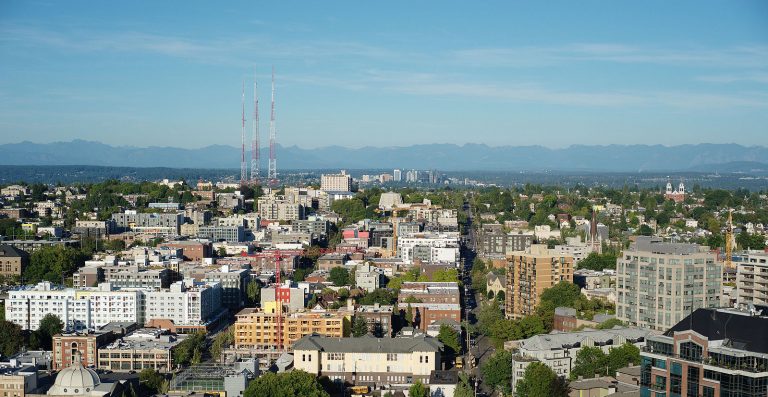Published on July 28, 2020

Seattle is the third most quickly gentrifying city in the US, after Washington, DC and Portland, OR (The Seattle Times [web]). Gentrification is often the outcome of decades of segregation, redlining, and urban renewal policies that exploit the large gap between existing and potential property values, which in turn encourages an influx of wealthier residents. Young professionals and more affluent people move back into the urban core, often into neighborhoods that have historically been home to people of color; this new wealth quickly changes the look and feel of the neighborhood, increases the cost of living, and displaces the original residents.
In Seattle, 50% of eligible census tracts have gentrified since 2000, including five tracts in Georgetown and South Park, one near Belltown, and one near Lake City. The median home values in each gentrified census tract increased by an average of 47% between 2000 and 2013. While racial demographics changed across the board between 2000 and 2010, the Hispanic population in each census tract dropped the most dramatically, a decrease of approximately 14.3% across seven census tracts. At the same time, the white population remained at an average of 56.2% of the total population of each tract (UW Civil Rights & Labor History Consortium [web]). In neighborhoods like the Central District and Capitol Hill, highly-educated and predominantly white professionals are moving into previously affordable areas, drawn to the city’s growing tech industry, and pricing lower-income homeowners and renters out. In both of these rapidly changing neighborhoods, gentrification not only pushes lower income people and communities of color out, but shifts the character of an area until it feels like a place for more affluent white people (The Spectator [web]).

Seattle Gentrification Map: 2000 Census – Present
Gentrification and displacement often lead to increased food insecurity as well. Food insecurity in Washington state peaked in 2012 at 15.4%, or approximately 1 in 7 people. By 2016, food insecurity had dropped to 12.9% statewide (Anti-Hunger & Nutrition Coalition [PDF]). In Seattle, people of color generally experience higher rates of food insecurity, as well as in households where the primary language spoken is not English. In 2019, food insecurity was highest in Southeast Seattle and Georgetown at 15%, compared to the city average of 11% (City of Seattle [PDF]), corresponding to the five gentrified census tracts in Georgetown and South Park that show the greatest decrease in residents of color between 2000 and 2010 (UW Civil Rights & Labor History Consortium [web]). These neighborhoods are commonly referred to as food deserts, where lack of access to a supermarket, or to healthy choices in supermarkets that do exist, are often the result of gentrification and displacement. As property values rise due to influxes of wealthier newcomers into historically Black and Latinx areas, higher rents either push existing residents further outside of the city, or put pressure on low-income families’ already tight budgets for food and other necessities.
In 2017, over 13,000 Seattle residents fell into the “food security gap”, defined as residents who earn too much to qualify for food assistance but not enough to buy the food they need due to high costs of housing, healthcare, and other necessities. Only people who earn less than 200% of the Federal Poverty Line (FPL) are eligible for the nationwide Supplemental Nutrition Assistance Program (SNAP), yet not until 300% of the FPL for adults and 400% of the FPL for families with young children does food insecurity nearly disappear in Seattle (City of Seattle [PDF]).

14th Ave S., South Park, Seattle, Washington, 2008.
In Seattle and around the country, food policy can lead to gentrification, which in turn can lead to food insecurity. Policies that create incentives for a new supermarket to locate in a low-income community may increase food access but also make the neighborhood more attractive for more affluent newcomers. Higher-end grocery stores or new bars and restaurants can all signal that a neighborhood may soon gentrify (CUNY Urban Food Policy Institute [web]). While often improving the walkability and aesthetics of a neighborhood, these new establishments aimed at wealthier residents make it much more difficult for existing residents, generally communities of color, to stay; and if they do, they face both increasing rent and food prices. Gentrification has transformed low-income neighborhoods across Seattle, yet many residents are now starting to advocate and work towards de-gentrification, hoping to improve the lives of the communities of color who first called areas like Capitol Hill and the Central District home.
Originally written by Rebecca Fogel, Urban@UW Communications Assistant.